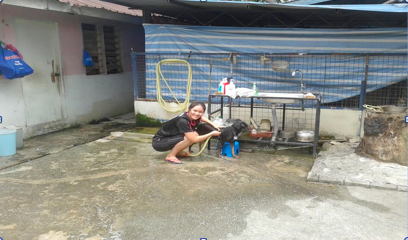Time: 8.00am – 12.30pm
Location: Zoo Negara ,Jalan Taman Zoo View, Kemensah Heights, 68000 Ampang, Selangor Darul Ehsan
Organizing Chairperson: Leo Chang Jia Wei
No. of participants: 7 Monash University Malaysia Leo Club members and 2 Monash University Malaysia students
Background:
Zoo Negara Malaysia is managed by the Malaysian Zoological Society, a non-governmental organization established to create the first local zoo for Malaysians. Zoo Negara was officialy opened on 14th November 1963 and has matured into a well-known zoo all around the world. We have a total of over 5137 specimen from 476 species of mammals, birds, reptiles, amphibians and fish.
Zoo Negara covers 110 acres of land which is situated only 5km from the city of Kuala Lumpur. Over the years, the zoo has transformed itself to an open concept zoo with over 90% of its animals being kept in spacious exhibits with landscape befitting its nature. We are working in making sure that the old zoo concept is changed entirely.
source: http://www.zoonegaramalaysia.my/zoo.html
Objectives:
-To raise awareness among the members of the club with regards to the health, welfare and behaviour of the animals.
-To provide support to the staff of Zoo Negara in their daily work.
-To provide the participants with the opportunity to witness the diversity of life and appreciate the services provided by the zoo.
-To help create bonds between the club members and provide the opportunity for fellowship and fraternity.
Details:
The event commenced with
the registration of the participants as soon as they arrived at Monash
University around 6.45am. Breakfast was provided and their deposits refunded.
Then, at 6.56 am, the volunteers travelled to Zoo Negara in 2 cars.
We reached Zoo Negara at
approximately 7.50am. After registration with Zoo Negara as volunteers, the
participants were divided into 4 groups and each group was taken to different
sections by the zookeepers. 3 volunteers were assigned to the Savannah section,
4 to the Bear section and 2 to the Animal Show building. The tasks assigned
were mainly to clean the cages/enclosures and to feed the animals.
Figure 1.0: Group picture of the participants
Figure 2.0: A participant cleaning the animal enclosure
Figure 3.0: Participants feeding the animals





